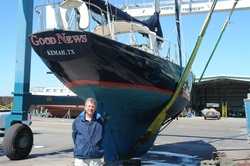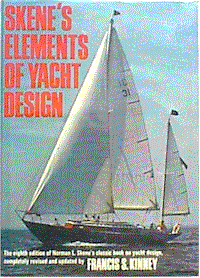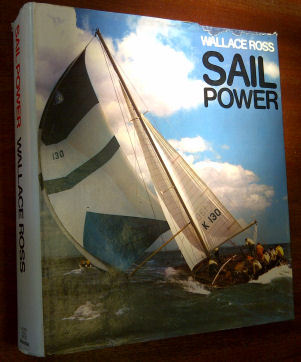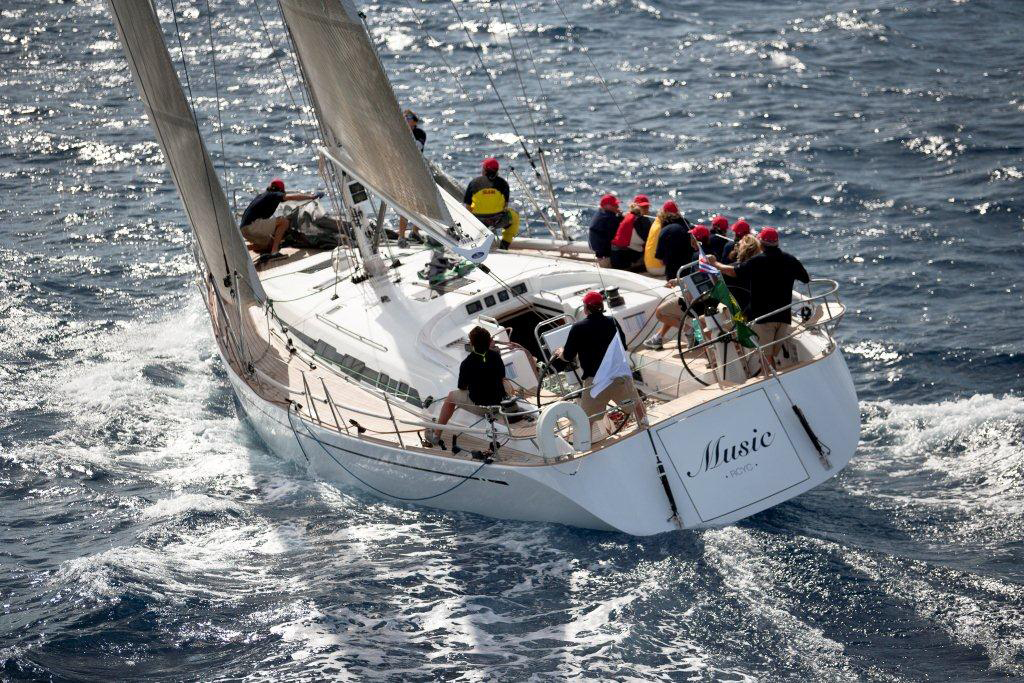Or can it ever, realistically, get built in the first place?
 |
| A Bob Perry-drawn Saga 43, still close to my definition of a performance cruiser that does not compromise on materials or safety |
Cruiser design is a very personal thing. The number of boat owners currently sailing (or at least tied to a dock) is enormous, of course. This is in part because a great number of boats built since the mid-'60s, when design cues still were inspired by wooden full-keelers, for the most part, are still in play. I know of the middle-aged grandchildren of original
Alberg 37 owners who've inherited Poppy's impulse buy...the Boat that Continues to Float.
 |
| A still-going Alberg 37: Good news for the buyer, not so good for the manufacturer of newer cruisers |
Of that great number of Classic Plastics, surprisingly few (when compared to, say, cars) have been stripped of metal and cut up for landfill or turned,
sometimes amusingly, into sheds. Current pricing for cruising boats is therefore reflective of both a glut of supply and a dearth of buyers willing to take on
the expenses of boat ownership, which, while variable, are
never particularly close to zero. The days of boat-hoboing, of anchoring for free, and living on line-caught fish, a sack of rice and salad greens grown on a decktop greenhouse, would appear to be largely past. Not completely, but there's not a lot of love for the transient yachtie on the tired-looking, affordable 28 footer who wants to hang out for a week in front of gangster mansions.
 |
| This houseboat is actually called a "Hobo". It resembles a 1970-era camper trailer and looks about as seaworthy |
Good riddance, some might say. Some who spend more time on the social event boards of yacht clubs than actually sailing in anything more than an angel's fart, but such folk are a significant portion of the cruiser-owning community. Even a casual inspection of boat-show offerings in the last decade or more will confirm that such vessels, while fast and exciting inshore and in light air, are not always fit or even (in my view) safe for any offshore voyaging. which is a minority pursuit of the small percentage of the population that own boats above Laser-size in the first place.
Most current offerings between 30 and 45 feet LOA seem to me to be big-arsed, wide-beamed, handhold and lockdown-deficient, flat-bottomed, over-canvassed, under-ballasted, shallow-tanked and shallow-bilged, which is great for club-racing and entertaining, but pounding away offshore? Unpleasant, unseakindly, and underbuilt come to mind.
There are exceptions, thank goodness, but not at prices friendly to those who want to keep their house.
 |
| The J/160 is another performance cruiser that hits the sweet spot for me, even if it would require a lottery win to obtain |
The market is ever reactive. The major builders, when they haven't been merged or driven into bankruptcy, build the most impressive boat at the most advantageous price point.
Designers design with selling their designs in mind. The reason
so many cars in the '50s had tail-fins is because the herd liked tail-fins and the suggestions that Space/Atomic Age design called for it, despite the fact that the fins actually created drag and sat atop the same crappy, heavy frames and indifferently machined, inefficient gas-guzzling engines.
 |
| This is the 1959 Cadillac Overcompensating for Something. |
The look was all. The function was attached to the stern of form with a frayed painter of 1/4" polypropylene.
 |
| If you can find this, buy it. While technical as hell, it's a treasure trove of how to spot a boat that won't be a twitchy mess in any kind of a wind. |
 |
| Now 40 years old, this book explained to me what was actually happening when I futzed with the main or eased a sheet. An invaluable resource for explaining why a boat sails as it does...and how to do it better. |
All of this is known, and yet people still have an interest in inverting the marketing formula that has worked for so long, and wish to create the ideal cruiser. Over at Attainable Adventure Cruising, veteran voyager
John Harries has been behind
a project somewhere between a thought-experiment and a yacht-design subscription club. I haven't yet waded through all of his excellent posts made over the last year, but the thrust so far is to create a 40 footer design that would strike some as bare-bones, as the concept of a wet bar or a place to hang a flat-screen TV is not emphasized, but hull strength, ergonomics, systems simplicity, seakindliness and robustness are.
A similar, if more "crowd-sourced" design ambition was found recently on the amusingly truculent
Sailing Anarchy website. The
Cruising Anarchy 36 incorporates a modded-out version of an original Bob Perry design, itself "spec'd out" to avoid the sins of the Bendytoy cabal currently over-represented at boat shows.
 |
| Ideal, or idealized? I found even a taste of the process of conception intriguing as it was born out of a hatred of the deficiences perceived as being endemic to modern cruiser design. |
|
 |
| Ah, that's better. 3D rendering is not nearly as annoying in this form as it is in the movies. |
An interesting and trenchant reply, I think, as is the
Navy 44, a brilliant sail-training sloop designed to last decades under the indifferent and predictably ignorant rough usage of generations of cack-handed cadets.
 |
| Read about how this is built and then bring a dental mirror and a flashlight to look at the way a new dock queen is built. |
Clearly, you can favour "durable" over "convenient" when your every sail has 10 fit young people aboard to pull at your whim, but
the choice of hank-ons over rhe near-ubiquitous roller-furling is interesting, to say the least, as are other apparently "old-school" choices. Some might maintain that
sailing itself is superfluous to modern naval practice, so who cares in what the U.S. Navy coats its buggy whips? And yet, to those of us who cruise, such big-budget test beds that sport thinking both old and new are a powerful pointer to the design elements, materials and techniques that make for safer, more effective, and arguably more enjoyable voyaging by sail.
 |
| Like this: If I wanted a little racing with my cruising, and laid gold eggs, a Swan 53 is a very goodm tough cruiser. |
When I began sailing in the late '90s, I was in my late 30s, with no real prior experience with boats. To make up my skill deficit, I did what I always do: I read up voraciously on the subject. Early on, I discovered two live-aboard tales, which confusingly had the same name: "All in the Same Boat". One was by American
Tom Neale , and talks about living with kids on a tricked-out Gulfstar in the late '70s. The second is about
Fiona McCall and Paul Howard, Torontonians who lived aboard a pretty Spartan, and yet closely packed, steel, junk-rigged 30 footer with two kids (!) in the '80s.
 |
| Not actually.... |
I loved both books and learned a great deal, particularly concerning how to live with kids aboard (I didn't have a kid at that point). I would say, however, that both books are now nearly fatally outdated in their assumptions and conclusions. Which is really no surprise, but they offered in their time a study in contrasts: Neale's self-contained, heavily equipped vessel versus the Howard/McCall "go now", functionally simple (bordering on primitive, as I recall) little boat that was capable of slowly, and safely, taking them through seas rough and benign on a penny-jar budget.
 |
| ...the same books... |
Alas, not only would such low-buck trips be nearly impossible to pull off today with the endless fees for permits, insurance, fuel and safety gear, not to mention the ease with which bureacrats and other pirates can find yachties and hit them up for cash,but the idea of putting a couple of school-aged kids on a home-built 30 footer might well be considered a form of child abuse. We seem to have become as a society more concerned about the preciousness of young life and its need to be preserved, and yet more stupid about evaluating risk and the need for physical challenges in order to give those same precious snowflakes some real-world baselines. My wife, the Darwinian biologist, suggests it's because upper-middle-class people (the same people who might have the money to buy boats, for instance) are deferring child-rearing until their anxiety-ridden 30s and 40s, and are tending to "bet the house" on a single kid. To put it more crudely, if an eight-child farm family of the year 1900 lost two kids to disease and one fell in the thresher playing unsupervised in the barn, it was tragic, but not an evolutionary full-stop. My son is the only child of me, the only son of an only child. He's at the pointy end of my genetic pyramid. No wonder I didn't buy a Bendytoy.
That said, I really think that we may be in the last generation of only three or so since 1960 to sail private small yachts around the world
before things go completely pear-shaped. Or, and this is in my view more likely, geopolitics, income disparities and energy costs dictate that this type of private tourism, for lack of a better term, becomes financially untenable or too dangerous to achieve.
While one still hears of heavily sponsored stunt sailing exploits like
single-handed teenaged circumnavigators, or the occasional "
couple with kids sponging around the world on an old beater", one cannot say it's impossible to be sub-40 and go sailing for years. But I would maintain that compared to the "All in the Same Boat" days, it is definitely more prohibitively expensive to consider taking a five-year sabbatical to do this sort of voyage. I think that is part of the reason why young people (outside of racing) are generally scarce in YCs, and the average age of cruisers has crept up into the "grey pubes" range, to put it realistically. It's not just because there are fewer of them and they have so much texting and status-updating to do, although that is part of it. The unfortunate truth is that the people who were 25 in the '70s are no longer willing to live without condo-like amenities now that they have retired (with pensions younger people will likely never enjoy, or live longer enough to receive). That's what is driving current cruiser design.
Nonetheless, I encourage initiatives such as the Adventure 40 project as laudatory and a spur to rethink HOW we should sail, if we indeed sail more than at the day-sail or weekender level. Clearly, I am trying very hard to make
Alchemy "strong, simple and seaworthy" and while they are very different designs, these are equally the goals in the Adventure 40, Navy 44 and CA 36 design processes. It must be remembered, however, that people who even understand and value such attributes over a second shower, A/C and a wine cooler are a subset of the subset of the people both wealthy enough, skilled enough and fit enough to consider pushing away from a dock and out of sight of land.
That said, I'll bet one could make a business case out of selling Adventure 40s or some similar "basic and bulletproof boat" and
then make a
second business case for a place that specialized in "hot-rodding" them for slightly less Spartan tastes. I say this claiming that I would love a J/160 set up like a J/105, but J-Boats don't even bother coming to my local boat show anymore. They aren't enough like a Jenny Bendycat with teak veneer and no fiddles on the saloon tables. Wait, you mean the sea
moves?

















No comments:
Post a Comment